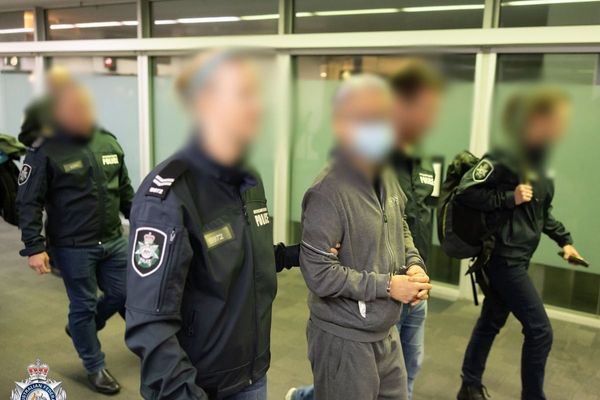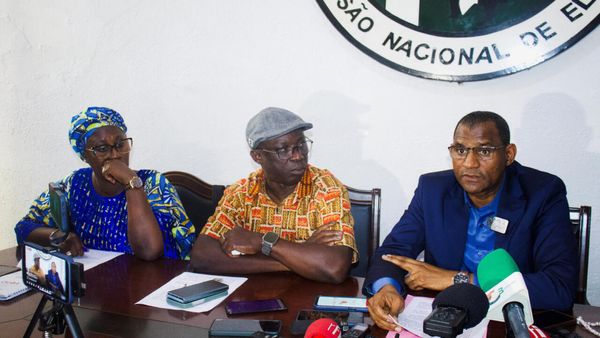
Martti Ahtisaari, who has died aged 86, was a former president of Finland who won the Nobel peace prize for his role as an independent mediator helping to end conflicts in Namibia, Kosovo, Northern Ireland and Indonesia.
His efforts were particularly useful in 1999 in the crisis over Kosovo after a two-month bombing campaign by Nato had failed to get Serbia’s hardline president Slobodan Milošević to withdraw his troops and police from the disputed province and end the ethnic cleansing of Kosovo’s Albanian majority.
Ahtisaari was president of Finland but agreed to act as the EU’s representative, working alongside the then Russian president Boris Yeltsin’s negotiator, Viktor Chernomyrdin. The two had several face-to-face encounters with Milošević.
Initially implacable, Milošević eventually agreed to withdraw his troops from Kosovo after Ahtisaari and Chernomyrdin promised that a peacekeeping force of Nato troops, known as Kfor, which would replace Serbian forces, would be under a United Nations mandate and that Serbia would remain sovereign over Kosovo. Russia’s switch to take sides with the west was the main factor that led Milošević to surrender when he saw he could no longer rely on the country to protect him; Ahtisaari’s firm line played a key role too.
At one moment when Milošević tried to drive a wedge between Ahtisaari and Chernomyrdin, Ahtisaari turned towards Milošević and said: “I’m not entirely sure you have understood what we have said correctly. We have already agreed on this proposal with Brother Chernomyrdin, as is.”
Ahtisaari then stunned Milošević by rising to his feet and giving Chernomyrdin a hug.
The pledge to keep Serbian sovereignty over the province was gradually undermined after Milošević lost power in Belgrade in 2000. Ahtisaari came out in support of Kosovo’s wish to declare independence. Again acting as the EU’s representative in talks with the new government in Belgrade, Ahtisaari invented the concept of “supervised independence” for Kosovo. The province would have to agree to protect the Serbian minority before its independence was internationally acknowledged.
Ahtisaari’s reputation as a successful mediator helped him to play a major role in ending a 30-year war in Indonesia. Towards the end of 2004 he was invited to mediate between the government in Jakarta and a guerrilla movement fighting for independence for the province of Aceh. Ahtisaari knew the issues from his time as Finland’s president when he promoted the interests of Finnish wood-processing corporations in Indonesia.
Shortly after accepting the job of mediator he invited representatives of both sides, the government and the guerrillas, to talks in Helsinki. A massive tsunami at Christmas that year had taken the lives of more than 100,000 people in Aceh and destroyed thousands of buildings. It also weakened the guerrilla movement, which was told by Ahtisaari that if it accepted wide-ranging “special autonomy” then the Indonesian army would withdraw.
As with Milošević, Ahtisaari was a tough negotiator. Sofyan Djalil, an Indonesian minister, said: “He is really authoritarian, decisive and occasionally openly angry – which seemed strange to us at first. But his directness made an impression. He always said, ‘Don’t waste time if you are not in earnest.’”
In 2008 Ahtisaari won the Nobel peace prize “for his great efforts, on several continents and over more than three decades, to resolve international conflicts”.
Born in Viipuri (now Vyborg) in eastern Finland, he was the son of Tyyne (nee Karonen), a farmer’s daughter, and Oiva Adolfsen, a Norwegian who served as a noncommissioned officer and mechanic in the Finnish army. Oiva changed his name to the more Finnish-sounding Ahtisaari shortly before Martti’s birth.
The family fled from the region when Martti was two, after the second world war broke out. They moved first to Kuopio in northern Finland, where he went to primary school, and in 1952 to Oulo, where he trained to be a school teacher.
His eye was already on work with foreign countries and in 1960 he took a job in Karachi at the Swedish Pakistani institute. Five years later he joined the Finnish foreign ministry. He served as Finland’s ambassador to Tanzania from 1973 to 1977 before moving to the UN as its commissioner for Namibia until 1981. He went back to Namibia in 1989 to help the territory’s transition to independence.
His image as a competent public servant paved the way for the Social Democratic party to invite him in 1994 to be their candidate for the presidency of Finland. The largely ceremonial post was to be filled by direct elections for the first time. He won narrowly.

A keen supporter of European integration, he campaigned hard in the 1994 referendum for Finland to join the EU. Two decades later, after Russia’s first intervention in Ukraine, Ahtisaari came out in favour of Finland abandoning its long-held policy of neutrality and joining Nato, a controversial move that was adopted this year after Russia’s full-scale invasion of Ukraine.
Ahtisaari chose not to run for a second term as president. Preferring to focus on international conflict resolution, he founded the Crisis Management Initiative (CMI). One of his first assignments was in Northern Ireland, where in 2000 he worked with Cyril Ramaphosa, later to be South Africa’s president, as an inspector of the process of decommissioning weapons.
In 2021 CMI announced Ahtisaari had Alzheimer’s disease and was withdrawing from public life.
He is survived by his wife, Eeva (nee Hyvarinen), a teacher whom he married in 1968, and their son, Marko.
• Martti Oiva Kalevi Ahtisaari, statesman and international mediator, born 23 June 1937; died 16 October 2023







